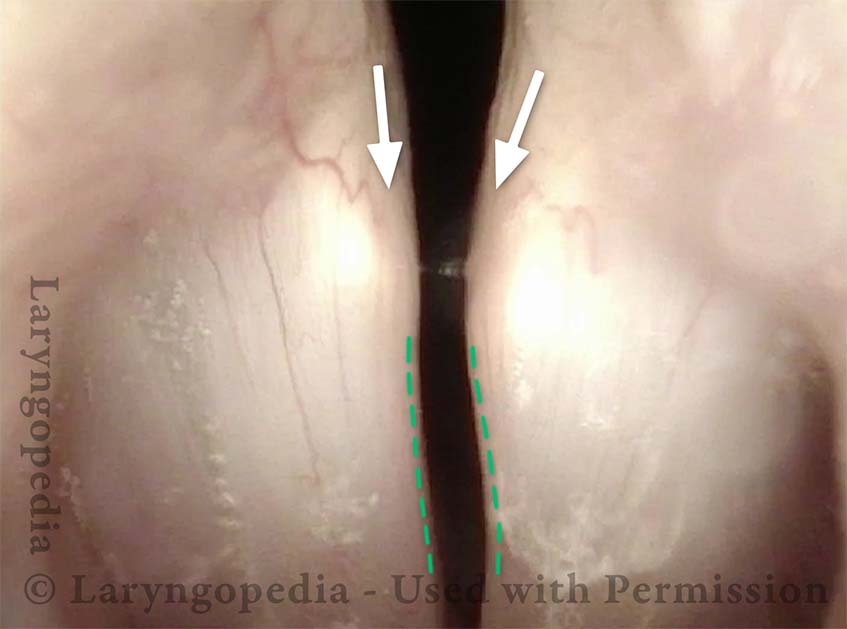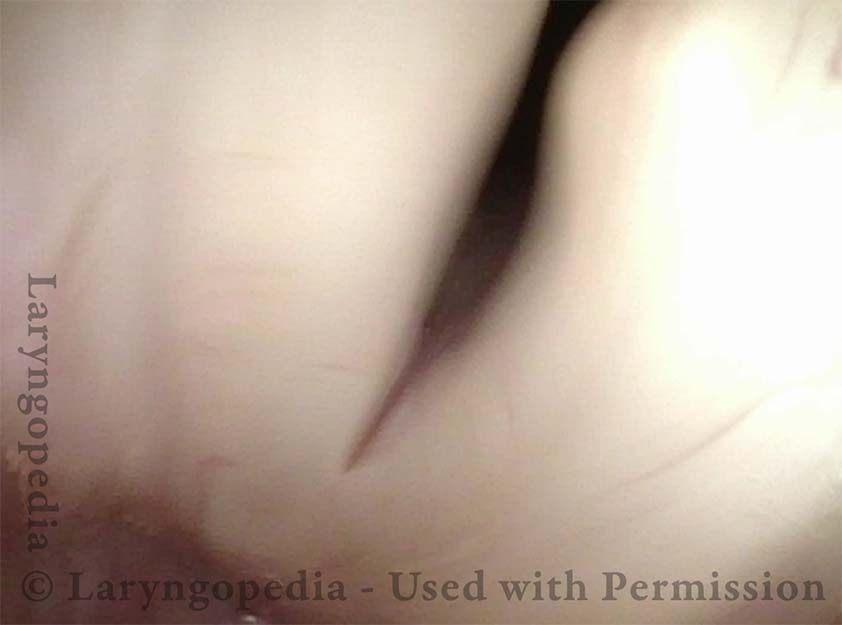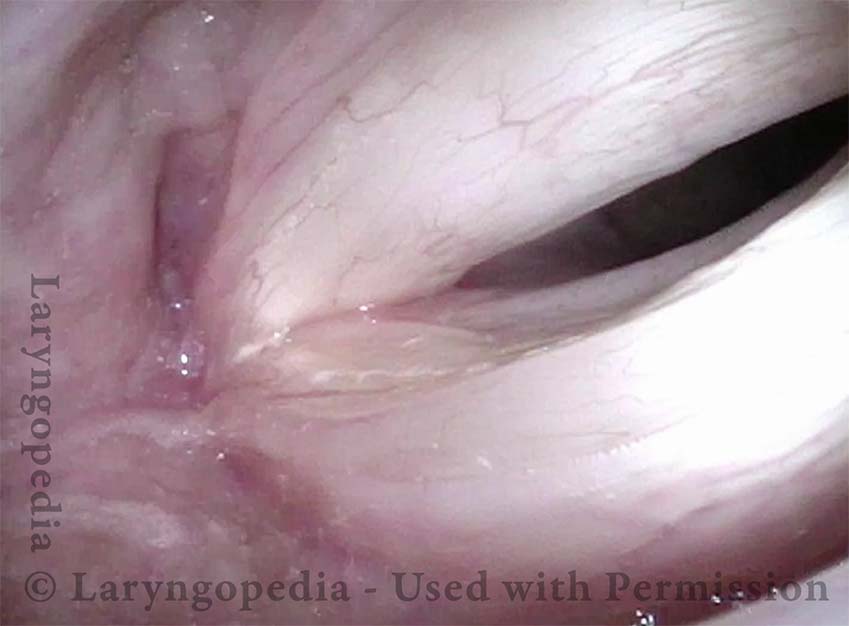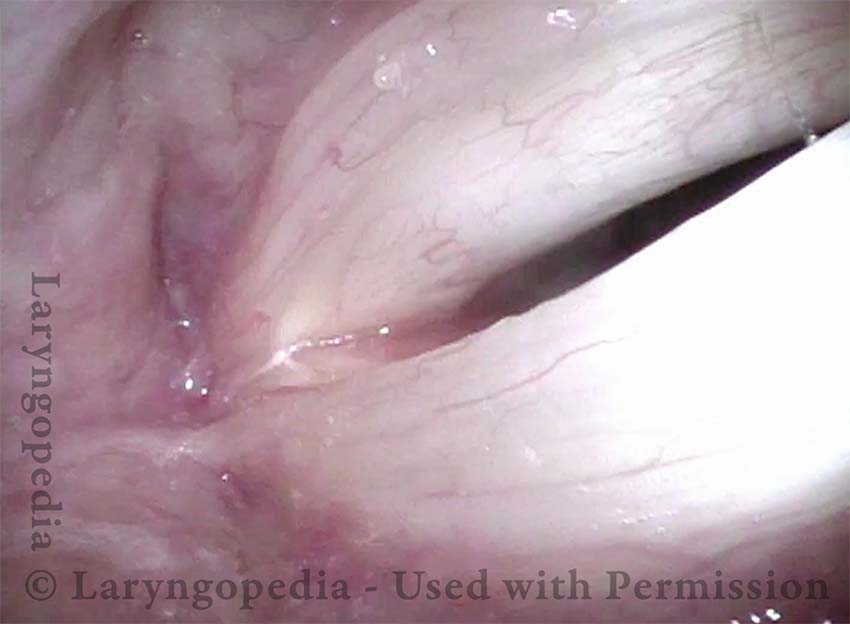What is the role of SLAD-R in treating AD-SD?
Consider This Scenario
I have a 40-year-old male patient with adductor spasmodic dysphonia (SD)—a successful businessman—who has received reasonable benefit from botulinum toxin injections. However, he finds the initial breathy phase frustrating and is seeking more consistent, near-perfect results. He also wishes for longer-lasting effects. For these reasons, he is considering selective laryngeal adductor denervation-reinnervation (SLAD-R). How should I advise him?
Answer: While expert opinions vary, here’s how I think about this situation:
1. High-Quality Botulinum Toxin Injections First
I believe that surgery such as SLAD-R should be considered only after the patient has had substantial experience with high-quality botulinum toxin injections. I define “high quality” in three ways:
- Timely access—injections available “on demand,” ideally within days to a week of request.
- Minimally uncomfortable administration—achieved through technical elegance.
- Consistently effective results, achieved through accurate targeting and dosing strategy, based on individual response patterns.
Patients deciding between surgery and injection therapy should ideally be comparing SLAD-R to high-quality injections, not to injections that are inconsistently effective, hard to access, or unpleasant to receive.
2. Good Outcomes with Injections → Less Need for Surgery
Patients who achieve consistent, functional voice outcomes with botulinum toxin are often best served by continuing this non-surgical approach. By contrast, patients who receive expert injections but still fail to achieve satisfactory voice results may be appropriate candidates for SLAD-R[1].
3. SLAD-R: Expectations, Risks, and Timing
SLAD-R, as developed by Dr. Gerald Berke, involves denervating the overactive adductor muscles and reinnervating them with a branch of the ansa cervicalis. This is a significant surgery, and it requires a voice recovery period—often of 3 to 6 months—during which the voice is markedly weak and breathy[2]. Many patients describe this as similar to a high-dose botulinum toxin effect during that phase.
Importantly, not all patients are fully satisfied with SLAD-R outcomes. Some report lasting improvement, while others experience partial benefit or recurrence of symptoms. Patient selection is key, and counseling should include discussion of the irreversible nature of the procedure[3].
4. Dystonia Can Evolve
Another consideration is that laryngeal dystonia may evolve over time. A patient with pure adductor SD at one point may later exhibit elements of abductor involvement or tremor, potentially complicating the long-term effectiveness of surgical treatment. In such cases, botulinum toxin may be needed again, even after SLAD-R[4].
5. A Promising Alternative: Daxxify
A potentially game-changing development is the emergence of Daxxify (daxxibotulinumtoxinA-lanm)—a longer-acting form of botulinum toxin. While approved for cosmetic use and recently for cervical dystonia, off-label exploration for SD is growing. Early clinical use suggests that patients who typically require three injections per year might benefit from only two injections annually, with comparable voice outcomes[5]. This may offer a compelling alternative for patients seeking longer benefit without surgery.
Conclusion
SLAD-R remains a valuable option for selected patients, particularly those who do not benefit from expertly administered injections. However, the availability of high-quality botulinum toxin treatment and now longer-acting alternatives like Daxxify have expanded non-surgical management strategies.
The right choice depends on informed discussion, individual response patterns, and patient priorities.
If SLAD-R works well for the businessman you are treating, he may be very pleased. But he must go into it with realistic expectations, understanding both the recovery process and the possibility of mixed long-term results.
References
- Blitzer A, Brin MF, Fahn S, Lovelace RE. Clinical and laboratory characteristics of laryngeal dystonia: A study of 50 patients. Ann Otol Rhinol Laryngol. 1988.
- Berke GS, Gerratt BR, Sawchuk WS, et al. Selective laryngeal adductor denervation-reinnervation: a new surgical treatment for adductor spasmodic dysphonia. Ann Otol Rhinol Laryngol. 1999.
- Ludlow CL. Treatment for spasmodic dysphonia: limitations of current approaches. Curr Opin Otolaryngol Head Neck Surg. 2009.
- Patel R, Bless D, Barkmeier-Kraemer J, et al. Update on the diagnosis and treatment of spasmodic dysphonia. J Voice. 2020.
- Revance Therapeutics, Inc. Clinical overview of Daxxify (daxxibotulinumtoxinA-lanm) for cervical dystonia and cosmetic indications. FDA Briefing Documents. 2023.
Photo Example: SLAD-R Findings in Spasmodic Dysphonia
This man has had longstanding laryngeal dystonia causing adductory spasmodic dysphonia. More than a year before these photos, he underwent SLAD-R on the left side (right of photo). The left cord moves normally, and one can see full recovery of the LCA (lateral cricoarytenoid) muscle, but the TA (thyroarytenoid) muscle is atrophic and flaccid.
Angle of Abduction (1 of 5)
Angle of Abduction (1 of 5)
Concave Margin (2 of 5)
Concave Margin (2 of 5)
Lateral buckling (3 of 5)
Lateral buckling (3 of 5)
Mild bowing (4 of 5)
Mild bowing (4 of 5)
Greater amplitude (5 of 5)
Greater amplitude (5 of 5)
Share this article
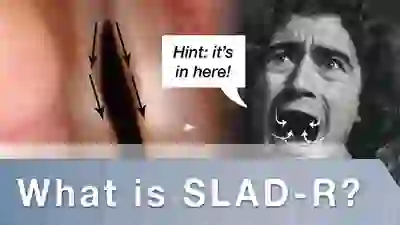
One Man’s Experience Over Time with SLAD-R
SLAD-R is a surgical alternative to ongoing “botox” injections for treatment of adductory spasmodic dysphonia. The surgery involves intentionally cutting the nerves that close the vocal cords for voice and reconnecting a different nearby nerve supply (reinnervating the nerves).
This surgery requires the patient’s willingness to endure an extremely breathy voice for many months after the procedure, while awaiting reinnervation.

